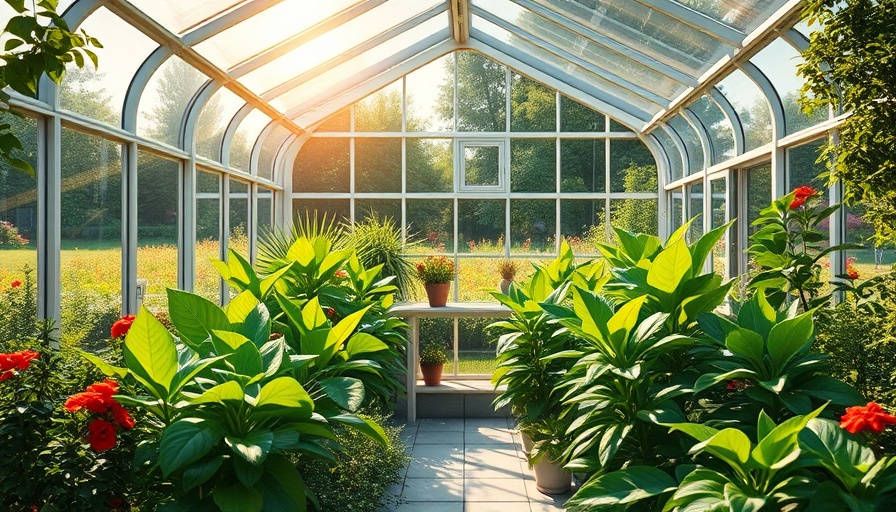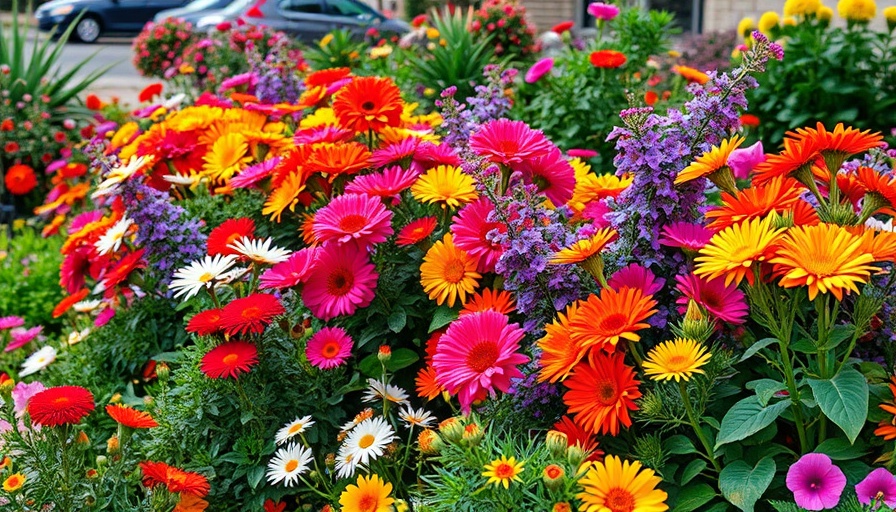
Finding the Right Spot: Why Location Matters
When considering how to fit a greenhouse in your garden, the site you select is arguably more significant than the type of greenhouse you choose. Understanding the growing conditions is key to ensuring that your greenhouse will thrive. Whether you're dreaming of midwinter tomatoes or lush, indoor tropical plants, knowing your goals will largely dictate the ideal placement.
Assess Your Sunlight Needs for Optimal Growth
First things first, ask yourself what you wish to cultivate. Most gardeners envision using a greenhouse to extend the growing season. If that includes prolific food crops like heirloom tomatoes or juicy peppers, you'll want a location that sunbathes in full light. Alternatively, if ornamental houseplants or succulent varieties are your desire, any spot catching bright, indirect light will work almost beautifully.
Keep in mind the varying sunlight outcomes depending on your regional weather. In particular, regions with high seasonal variations may require distinct consideration—what thrives in the summer sun might need more shelter in the unpredictable spring and fall months.
Evaluating Site Conditions Before You Build
The physical landscape of your backyard can significantly affect the functionality of your greenhouse. Begin by considering soil quality, drainage, and wind conditions. A level site with access to utilities such as water and electricity will streamline your gardening operations. Evaluating whether the ground is stable or prone to flooding will save you trouble down the road. You can enhance site's irrigation by incorporating garden water management systems, considering options like rain barrels or hoses that are both eco-friendly and cost-effective.
Accessibility: Make It Easy to Work Inside Your Greenhouse
Access is another vital characteristic to think about. To ensure a positive gardening experience, plan for adequate walkways that lead to your greenhouse without hazards like mud puddles or overgrown grass. An appropriately designed garden pathway will make your outdoor tasks easier—whether you're carrying tools, moving plants, or simply soaking up the sun while enjoying your garden work. This is especially crucial if you're planning on wintertime gardening, as snow can restrict access to certain areas.
Cultivating Beauty Around Your Greenhouse
While constructing your greenhouse, why not think about the landscaping around it? You can enhance aesthetics by planting climbing vines to dress the walls, or placing a few decorative pots nearby filled with seasonal blooms or fragrant herbs. Proper garden borders and seating options can transform the outdoor atmosphere into a personal retreat that connects you with nature. Incorporating ornamental grasses can not only serve as natural windbreaks but also elevate the overall beauty of your green space.
Future-Proof Your Greenhouse Layout
Plan for the future by considering how your greenhouse will fit into your overall garden landscape design. A well-devised vegetable garden layout or herb garden can complement your greenhouse and improve functionality. Thoughtful consideration of how your greenhouse integrates with other elements of yard maintenance, such as gardening projects or raised garden beds, can help maximize your gardening potential.
Final Thoughts on Greenhouse Placement
Creating a perfect spot for your greenhouse involves anticipating future growth and design needs, paying close attention to light and access, and coupling it with beautiful landscaping ideas. A greenhouse is more than a structure—it's an investment in your gardening future. So, it’s worth investing time to choose the best spot, ensuring that your hard work pays off with bountiful harvests.
 Add Row
Add Row  Add
Add 




Write A Comment